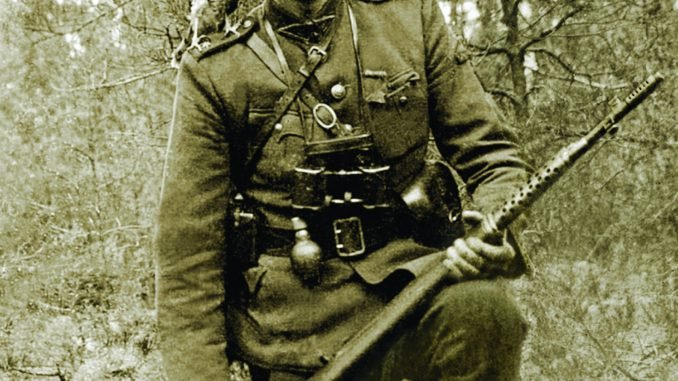
“In part, there was a conscious ethnic amnesia, as this was an important but, at the same time, a controversial period of time. I believe that the attention to Ramanauskas is an attempt to take a more open stance on our past and admit that there were heroic episodes and that there were people determined to sacrifice themselves and fight for Lithuania’s independence,” Girnius told BNS on Tuesday.
In his opinion, discussions about guerrilla became more open in Lithuania during the past five years after decades of silence, which was a result of the communists’ unwillingness to admit that there had been a different path during the 50 years of occupation.
“It was a sensitive topic. The main reason – the unwillingness of willing parties to acknowledge that there had been a different path than working for Lithuania by the instructions from Moscow. This is where we are different from France who immediately created an image of a fighting France, although there was less fighting. The topic is also sensitive because of civilian casualties,” the philosopher added.
In an effort to emphasize the importance of guerrilla resistance in the struggle against the Soviet occupation, the parliament announced 2018 as the year of Ramanauskas-Vanagas.
“Vanagas was one of the persons who decided to fight for Lithuania’s freedom even amid slim chances of success and the high probability of being killed in the unequal fight. There are the moments where people have to choose,” said Girnius.
As a teacher at the Alytus school of teachers, Ramanauskas-Vanagas was captured by the Soviet security and had to choose between secret collaboration or becoming a guerrilla, so he chose the latter path.
In Girnius’ words, at the start of the guerrilla movement in 1944, Lithuanians were a mature nation that did not want to live in slavery, therefore, the support to guerrillas was strong.
Many guerrillas went to the forests in hopes of participating in the resistance efforts until a Western intervention, which will prevent the Soviet Union from seizing the territories that the West had fought with the Nazis over. However, it was clear in 1948-1949 that there would be no intervention.
Nevertheless, in Girnius’ words, many guerrillas continued their efforts and attempted to keep the idea of independence alive.
“The partisans hit the forests in hopes of sending any signal to the Western world about Lithuania wanting to be independent and being ready to fight for it. In other words, they wanted to send a signal for the West to come and help them,” he added.
Ramanauskas-Vanagas commanded the guerrillas of the Dzūkija region and signed a declaration of the Lithuanian Freedom Fight Movement together with other partisan leaders in 1949.
Armed struggles for restoration of Lithuania’s independence lasted from 1944 until 1953.
Ramanauskas-Vanagas was arrested 1956, tortured by Soviet officials and executed a year later. He was posthumously honored with top state awards after Lithuania regained independence in 1990.
